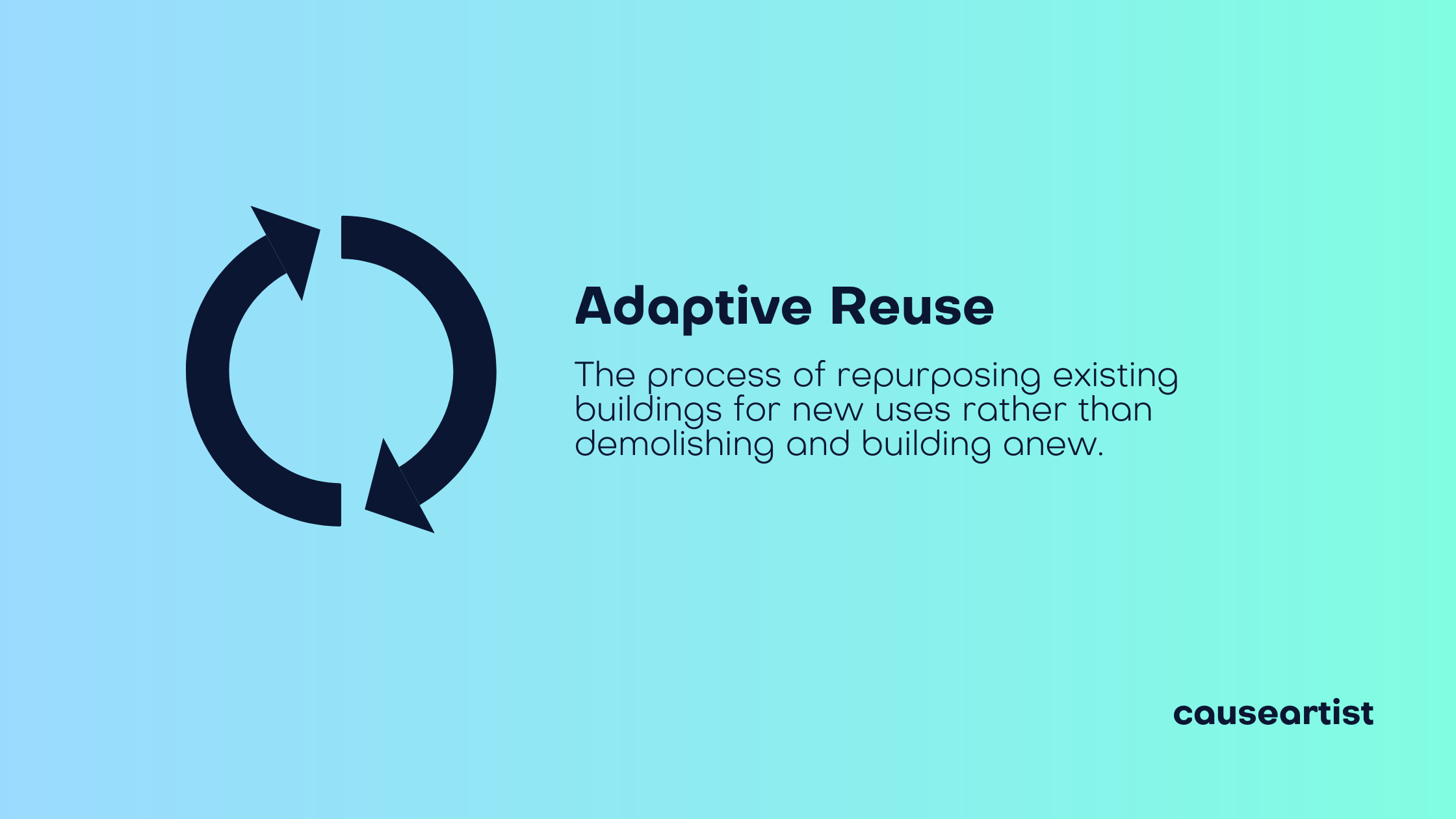Adaptive reuse refers to the process of repurposing old or underutilized buildings for new, often different functions than originally intended — while retaining much of the structure’s original integrity.
Think of it as recycling for real estate — creative, cost-effective, and climate-conscious.
Why Adaptive Reuse Matters
Adaptive reuse isn't just a trendy architectural concept — it's a practical and sustainable response to growing environmental and economic challenges.
Here’s why it’s making an impact:
- ♻️ Reduces Construction Waste
Avoids demolition and landfill use by preserving the existing building materials. - 🏛️ Preserves Cultural Heritage
Maintains the architectural character and history of a community or city. - 💰 Cost-Effective
Often cheaper than new construction, especially when factoring in demolition costs. - 🌆 Revitalizes Communities
Injects new energy into neighborhoods, driving economic activity and foot traffic. - 🌱 Minimizes Environmental Impact
Reduces carbon emissions tied to new construction and material sourcing.

Examples of Adaptive Reuse in Action
- Warehouses → Urban Lofts
Old industrial spaces transformed into modern, open-concept living spaces. - Churches → Cultural Centers
Preserving stained glass and steeples while turning spaces into event venues or museums. - Factories → Tech Offices
Blending industrial charm with modern amenities for creative workspaces. - Shipping Containers → Cafés & Retail Shops
Repurposing old containers into mobile, modular business spaces.
Key Considerations for Adaptive Reuse Projects
Before jumping into an adaptive reuse project, developers, architects, and cities should consider:
- 🏗️ Structural Integrity
Can the building support the proposed changes? - 🧾 Zoning & Building Codes
Are permits or variances needed for the new use? - 💡 Modernization Needs
How much work is needed to update plumbing, HVAC, or electrical systems? - 🕰️ Historic Preservation Rules
Are there restrictions on what can or can't be altered?
Adaptive Reuse & Sustainability
In a world facing climate change and overdevelopment, adaptive reuse is a key strategy for building a greener future. It’s aligned with principles like:
- Circular Economy – Extending the life of materials and structures.
- Smart Growth – Encouraging dense, efficient land use.
- Low-Carbon Development – Reducing the emissions footprint of new infrastructure.
The Future of Adaptive Reuse
With cities becoming denser and climate concerns mounting, expect adaptive reuse to play a major role in sustainable urban development. It’s not just a trend — it’s a strategy for a more resilient and responsible world.




